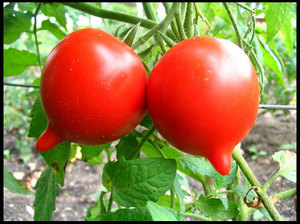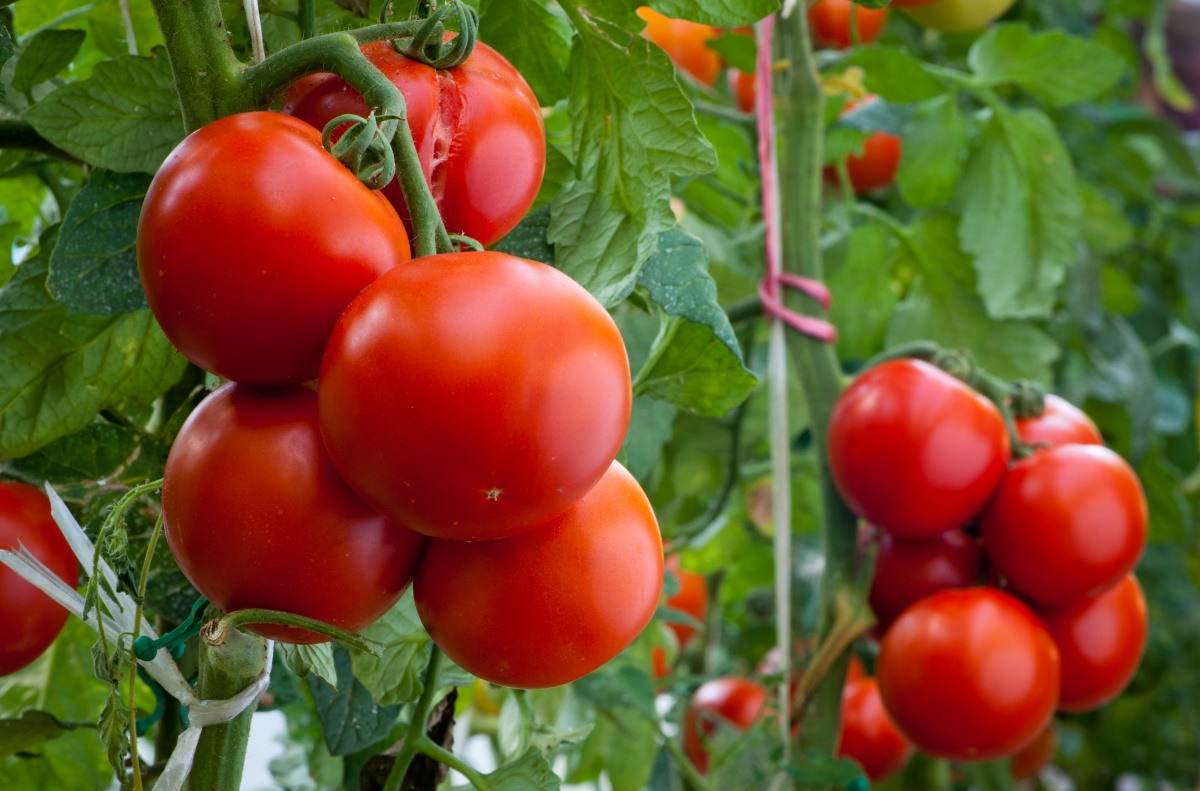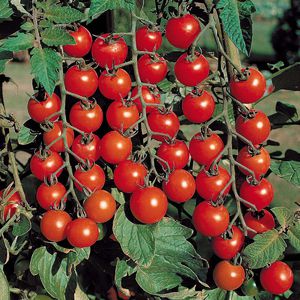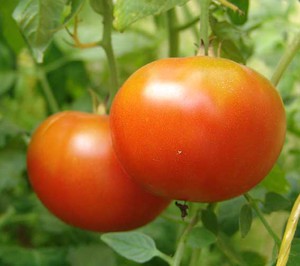 As early as the fifth millennium BC, the ancient farmers of North and South America were engaged in the selection of tomatoes. The seeds of exotic cultures came to Europe during the development of seafaring in the 16th – 17th centuries.
As early as the fifth millennium BC, the ancient farmers of North and South America were engaged in the selection of tomatoes. The seeds of exotic cultures came to Europe during the development of seafaring in the 16th – 17th centuries.
The first fruits that appeared in Europe were yellow-fruited. That is why they were called poetically - "apples of love". At first, tomatoes were bred as ornamental or medicinal plants, later as a vegetable crop.
Due to the content of dietary fiber, pectin, a large amount of vitamins and minerals, tomatoes occupy a significant place in human nutrition. Antioxidants in their composition serve as prophylaxis for the prevention of cancer, cardiovascular, cardiac diseases.
Amateur gardeners grow on their plots a variety of varieties, bred taking into account the peculiarities of the climate of the Leningrad region.
Content
Climatic conditions of the Leningrad region
The climate of the Leningrad region is characterized by:
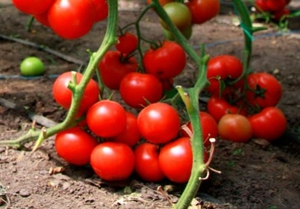 excessive moisture - more precipitation falls than evaporates;
excessive moisture - more precipitation falls than evaporates;- high cloudiness - there are only about 30 sunny days a year;
- the onset of spring is delayed due to winter hypothermia of vast bodies of water;
- frosts in May and early June.
Favorable conditions for growing tomatoes
- Soil composition - soils should be moderately fertile, loose, permeable, light and medium in texture, with low acidity. In the Leningrad region, podzolic, poor in humus and characterized by excess acidity prevail. Cultivation will require artificial soil improvement.
- Lighting - despite the fact that the tomato is a sun-loving plant, it can grow and bear fruit in a lack of light. The speed of crop formation depends on the degree of illumination. The period from flowering to receiving the first fruits can increase by 15 days in prolonged inclement weather.
- Temperature mode - seed germination occurs when the soil warms up to + 15–16 ˚C. Temperatures are dangerous for flowering - the lower limit is -12˚C and the upper limit + 30˚C, which can lead to the death of flowers, slowing down the development of the plant. Greenhouses and hotbeds save plants from morning frosts.
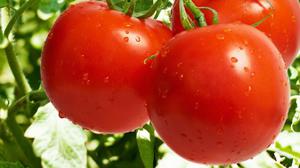 Moisture - Before flowering, the soil must not be excessively moistened. High humidity of air and soil - up to 70 and 80%, respectively, they will need only at the fruiting stage. Care must be taken to ensure that water is supplied to the plants evenly and provides a continuous supply of nutrition to the roots.
Moisture - Before flowering, the soil must not be excessively moistened. High humidity of air and soil - up to 70 and 80%, respectively, they will need only at the fruiting stage. Care must be taken to ensure that water is supplied to the plants evenly and provides a continuous supply of nutrition to the roots.- Air - an abundance of warm dry air circulating freely among the plants, contributes to optimal growth. Excessive humidity interferes with proper pollination, leading to the appearance of pests and diseases. Removal of leaves near the root in the ground layer is favorable for air exchange.
- Fertilizer - excess fertilizer will not benefit the plant. More nitrogen for the development of vegetative organs is required at the stage of growing seedlings and after planting in the ground. Potassium and phosphorus are essential during flowering and fruit development.The optimal mineral content in the top dressing increases the disease resistance of tomatoes.
When preparing the soil, fresh manure must not be used. Narrow beds and ridges in the conditions of the Leningrad region are better warmed up and ventilated.
The optimal place for planting is well-lit and warmed up by the sun.
We must not forget about the predecessor plants. The best of them are zucchini, pumpkin, cabbage, beans, peas, root vegetables. On the site where representatives of the nightshade family grew (eggplant, pepper, potatoes), one should refrain from growing for 3-4 years in order to avoid common diseases.
The best tomato varieties for the Northwest
They differ in the type of development of the bush, the ability to resume their growth and flowering.
Determinant
Tomatoes stop growing after the formation of 4–5 clusters, grow well in open ground or in unheated greenhouses. Pickling in the conditions of the Leningrad region is necessary to achieve uniform ripening of fruits.
Northern Lights - early, grows in open ground and in greenhouses. The stem grows up to 90 cm, it needs pinching and garter. Fruits up to 90 g.
Bovine heart is a medium-late high-yielding salad. Fruits gain weight up to 500 g. It is used outdoors and in greenhouses.
Talalikhin 186 - undersized (up to 60 cm), early maturing. Grows in open ground, under a film and in pots. Low resistance to late blight.
The Bronze Horseman is an early variety with a long fruiting period for both open and closed ground. Resistant to late blight. The fruits can be stored for up to two months.
Comet - early maturing, loves warmth, intended for greenhouse maintenance.
Ground mushroom - a squat bush, resistant to cold weather, disease. Poorly tolerates high humidity. Refers to early maturing.
Zoren is early ripe, fruitful. It tolerates cold outdoors well.
Siberian early ripening - undersized bush, high yield. Grows well without shelter. Resistant to disease.
Guarantor - an early ripe variety for greenhouse maintenance.
Tsarskoye Selo - early maturing, tall (up to 95 cm). It grows both in the open field and under the film.
Lyana is very early, the yield is friendly. Resistant to disease.
Red arrow - the stem grows up to 1.5 meters, early maturing. Grown in greenhouses. It tolerates frost and lack of lighting.
Harlequin - excellent taste, high-yielding. Resistant to temperature changes and disease.
Blagovest - the variety is intended for greenhouses, early maturing, high-yielding, little susceptible to temperature fluctuations.
Stamp
 They are characterized by a powerful, squat stem. Removal of stepsons and tying is not required.
They are characterized by a powerful, squat stem. Removal of stepsons and tying is not required.
Olya - early ripening, tolerates frost well, is not susceptible to diseases. Fruits grow up to 90 g.
Pink leader - bears fruit with pink fruits weighing up to 150 g. Adapted to the climatic conditions of the Leningrad region, early ripening.
Valentine - yields medium-sized orange fruits, early ripening. Grows well in the open field
Northern baby - very early, with small tomatoes (30–35 years). Cultivated in the open field. Disease resistant.
Nevsky - early ripening, grows in open ground, is not afraid of cold weather and late blight.
Baltic - undersized, ultra-early maturing, high-yielding. Grows in open ground, not afraid of thickened planting.
North - due to early maturity, it is not afraid of late blight. High-yielding.
Anniversary VIR - early ripening variety is cultivated in the open field and in film greenhouses. The yield is high.
Berry - cold-resistant, early maturing, high-yielding. It tolerates a lack of sunlight well.
Ranetochka - in the open field, one bush is capable of producing up to hundreds of fruits weighing 30–40 years.
Hummingbird - early maturing, grown in garden plots and in pots. Fruits weighing up to 20g. suitable for canning as a whole.
Antoshka - the undersized bush gives the first yellow fruits 90 days from the start of germination.
Far North - early ripening, fruitful, immune to cold weather and lack of light.
Indeterminate
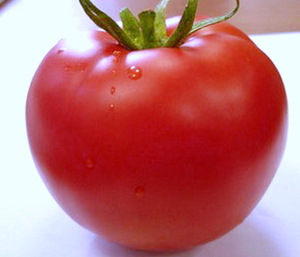 Tomatoes are characterized by continuous stem growth. In the conditions of the Leningrad region, they are recommended for greenhouses, where they can grow and bear fruit for more than a year. They need especially careful shaping and tying the whip.
Tomatoes are characterized by continuous stem growth. In the conditions of the Leningrad region, they are recommended for greenhouses, where they can grow and bear fruit for more than a year. They need especially careful shaping and tying the whip.
Sweet cherry - super early ripening, sweet, not afraid of cold weather and disease. The stem grows up to five meters.
Alyona - cold-resistant, grows well with a lack of light, recommended for growing in greenhouses.
Swift - in greenhouses, tall stems need ventilation. Insufficient lighting tolerates well.
Rianto - high-yielding, early maturing, disease resistant.
Semi-determinant
These are hybrid varieties. They are able to suddenly stop growing. They are not distinguished by high early maturity.
Express - very early, has a compact bush, grows in open ground.
Dandelion - produces orange fruits. It is well cultivated in open ground and in greenhouses. Needs pinching and tying.
The prudent gardener stocks up on several varieties of tomatoes with different biological characteristics in case of death of sprouts under adverse conditions.
